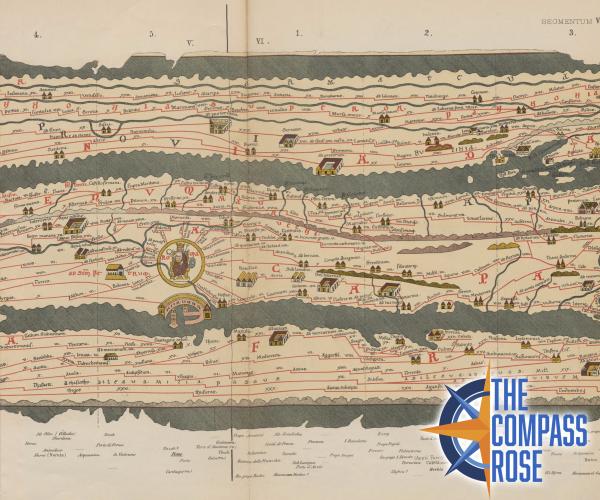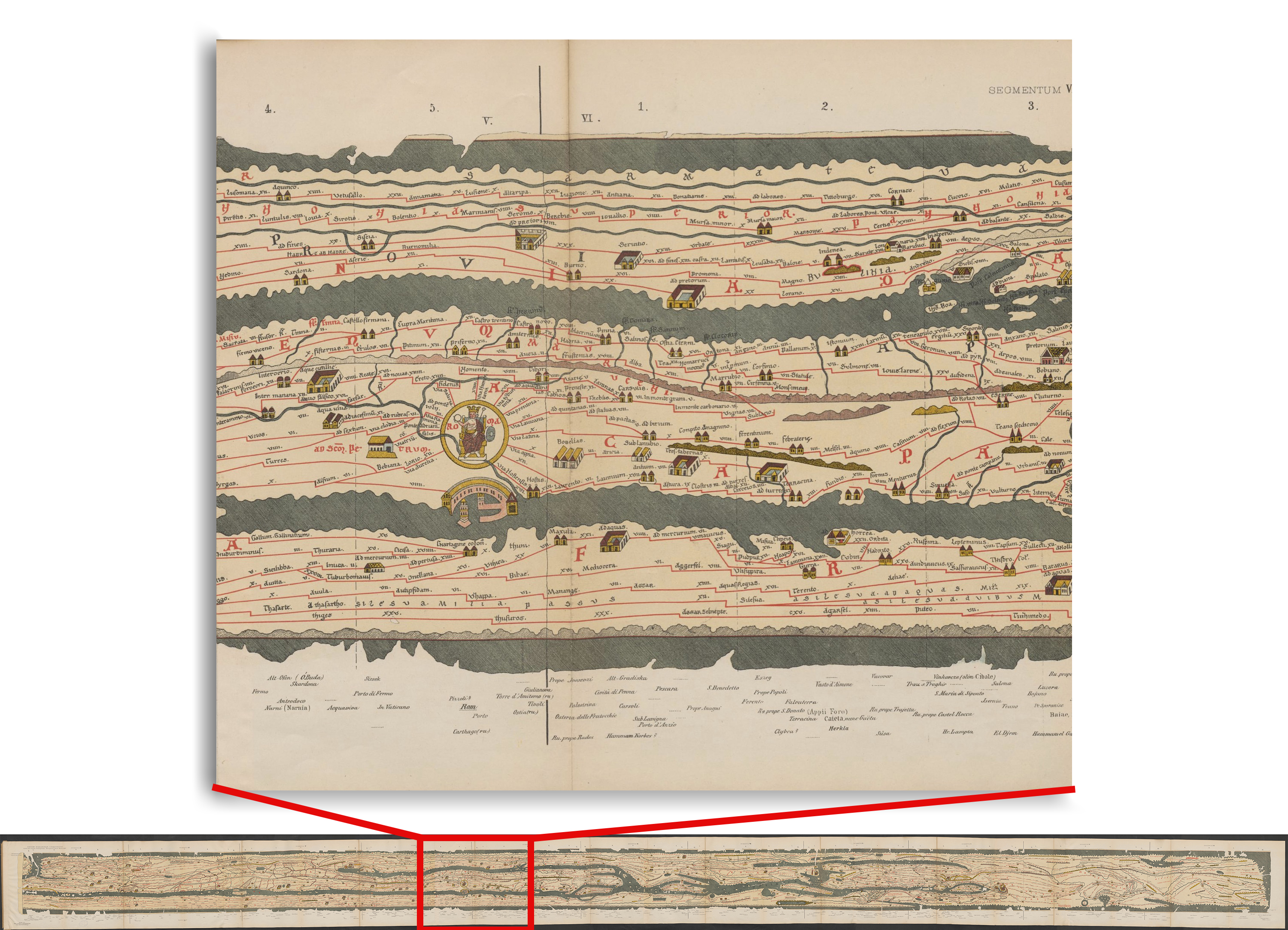
by Evan Spencer


by Evan Spencer
The purpose of The Compass Rose is to raise awareness of Special Collections’ resources and to foster the use of these resources. The blog series also reports significant new programs, initiatives, and acquisitions of Special Collections.
Today, Special Collections presents a special guest post from Architecture undergraduate student Cameron Nowell. Cameron developed this post as part of Dr. Leah McCurdy’s class called Art of Antiquity and explorations items in Special Collections that resonate with Greco-Roman histories during the spring 2022 semester.
Some of my family is Jewish and some of it is German. The history of each group comes with implications - when I say German people think of Nazis, and when I say Jewish people think of suffering. This impression is largely due to the actions of Nazi Germany in World War II, which is often viewed as an isolated act of hatred. This impression is inaccurate and a vast oversimplification of pattern that has repeated over the course of millennia. In fact, my visit to Special Collections in Spring 2022 reminds me just how prevalent antisemitism is throughout history, predating even Germany itself.
It began all the way back in the Second Babylonian Empire, in which Neo-Babylonian king Nebuchadnezzar II destroyed Solomon’s Temple (also known as the First Temple) around 586 BCE. This led to the enslavement and expelling of Jews, an event usually referred to as ‘Babylonian exile’ (Larsson 1967). In the Roman period any Jewish rebellion against Roman persecution resulted in the uprising being summarily crushed or religious sites being destroyed, as with the Second Temple in 70 CE (Rutgers 1994). The Romans then commemorated their victory over the Jews in the Arch of Titus, a triumphal arch which showed items like Menorahs being looted by Roman soldiers in Jerusalem (Marx 2013). In fact, the Romans had also expelled Jews in 139 BCE under the praetor Hispanus (Rawson 1973), and in 19 AD under Tiberius (Williams 1989). That isn’t even mentioning the Jewish-Roman wars which ended with most Jews dead, enslaved, or expelled (see a pattern yet?). And of course, the Romans are well-known to have crucified Jesus, who was a Jew and a Rabbi. These are just a few examples that prove the regularity of Jewish death in classical antiquity.

FIGURE 1: German copy of Roman original, Tabula Peutingeriana, c. 4th century (original) 13th century (copy), scroll, UTA Special Collections.
Let’s look back to Germany, which has a curious overlap with Rome when it comes to antisemitism. Consider the famous scroll Tabula Peutingeriana (Figure 1), a facsimile of which can be viewed in Special Collections. At first glance it is simply a map of Roman roadways spanning from Francia and Germania all the way to India, placing Rome near the center. Originally produced in the 4th century by Roman makers, the map was later reproduced by German cartographers in the 13th century (Albu 2005). While the map itself seems unrelated to antisemitism, consider the history of ownership: in 1494 the reproduction was stolen by Conrad Celtis (a German scholar) who then gave it to Konrad Peutinger, a collector and advisor to German King and Holy Roman Emperor Maximilian I (Silver 1985). Maximilian I later authorized the confiscation of Jewish religious texts and expelled Jews, much the same as Rome did (Hirsch 1892, Bell 2001). Sounds pretty familiar, right?
Special Collections also has several original pages from The Nuremberg Chronicle, an illustrated encyclopedia covering the Christian understanding of world history during the late 15th century. It was produced in 1493 in Nuremberg and was released in both Latin and German (Bell 2001). One of the most famous images from the Chronicle is an illustration titled Burning of the Jews (Figure 2); note the Jews’ position crouched below the gaze of a knight, their faces set in grimaces. This is remarkably similar to a motif in Roman art in which the ‘inferior’ person(s) were depicted as grotesque and in a lesser position. An excellent example of this motif is the Roman Ludovisi Battle Sarcophagus (Figure 3), depicting the ‘barbarian’ Gauls being defeated by the Romans (Francis 2000) in an eerily similar depiction to Burning of the Jews. Even in an encyclopedia, Jews are portrayed suffering gruesomely.
In the modern era Jewish death and suffering is synonymous with one figure: Adolf Hitler, who committed absolutely monstrous acts against Jews. These acts are often viewed as an isolated act of extremism, but Hitler himself related his perceived ‘greatness’ to Rome, purporting that Romans were Aryan predecessors (Scobie 1990). Hitler’s fascination with Rome can be seen in the Germania model (Figures 4a, 4b), the planned - but never completed - refurbishing of Berlin (Giesler 1977). Of it he said “As world capital Berlin will only be comparable with Ancient Egypt, Babylon, and Rome! What is London, what is Paris compared to that!” (Jochman 1980). We can further see his inspiration through his obsession with Hadrian’s Pantheon (Figure 5), a Roman temple he visited several times. This structure directly inspired the Volkshalle (Figure 4b) (Scobie 1990). Hitler utilized motifs from antiquity to project a sense that his "achievements" were akin to Roman "achievements."
Volkshalle (literally ‘folks hall’) is particularly interesting due to its relation to the Völkisch movement, which was a manifestation of Germany’s rampant nationalism, concepts of ethnic purity, and naturally, antisemitism (Longerich 2010). Nazis such as Joseph Goebbels (the chief propagandist) and Adolf Hitler pushed this movement as a part of their nationalist agenda (Orlow 2010). In this vein, Volkshalle reads as not a hall for the people but a monument to Hitler (an idea supported by Albert Speer, Nazi and architect who was sentenced in the Nuremberg trials; see Speer 1969 and Van Der Vat 1997). This deification of Hitler might seem in direct opposition to his lack of contemporary statues, but to me it makes sense. Hitler painted himself as the absolute leader who could not be questioned; did the Romans not do the same? Do our leaders not do the same?
There’s an adage by George Santayana that I find is a fitting summation of my point: “Those who cannot remember the past are condemned to repeat it.” All too often, we think that Jewish suffering consists of a single event, but anti-Semitic violence is a pattern that has been repeated through history time and time again. The Nazis capitalized on this pattern, and indeed Roman ideas of superiority, by slaughtering six million Jews in the Holocaust. At the time that was one-third of worldwide Jewry, two-thirds of European Jewry; and people forget this. They forget or outright deny that the Holocaust resulted in absolute tragedy and loss of Jewish culture, of Jewish life. We cannot afford to lose sight of this pattern. The last time we did, six million people died, and Jewish culture was forever changed.
Albu, Emily, “Imperial Geography and the Medieval Peutinger Map”. Imago Mundi. Vol. 57, No. 2 (2005), pp. 136-148.
Bell, Dean Phillip (2001). Sacred Communities: Jewish and Christian Identities in Fifteenth-Century Germany. Brill. p. 119.
Duniway, David C. “A STUDY OF THE NUREMBERG CHRONICLE” The Papers of the Bibliographical Society of America, Vol. 35, No. 1 (First Quarter, 1941), pp. 17-34
Francis, Jane. “A Roman Battle Sarcophagus at Concordia University, Montreal”. Phoenix, Vol. 54, No. 3/4 (2000), pp. 332-337
Giesler, Hermann. Ein anderer Hitler: Bericht seines Architekten: Erlebnisse, Gespräche, Reflexionen (2nd ed.). Leoni am Starnberger See: Druffel, 1977.
Hirsch, S.A., “John [Johannes] Pfefferkorn and the Battle of the Books” The Jewish Quarterly Review, Vol. 4, No. 2 (Jan., 1892), pp. 256-288
Jochman, Werner. Monologe im Führerhauptquartier 1941–1944, p. 318. Munich, 1980.
Larsson, Gerhard, “WHEN DID THE BABYLONIAN CAPTIVITY BEGIN?”. The Journal of Theological Studies, New Series, Vol. 18, No. 2 (October 1967), pp. 417-423
Longerich, Peter, Holocaust: The Nazi Persecution and Murder of the Jews. Oxford: Oxford University Press, 2010.
Marx, Dalia. “THE MISSING TEMPLE: THE STATUS OF THE TEMPLE IN JEWISH CULTURE FOLLOWING ITS DESTRUCTION”. European Judaism: A Journal for the New Europe. Vol. 46, No. 2 (2013), pp. 61-78
Mosse, George L., The Nationalization of the Masses: Political Symbolism and Mass Movements in Germany from the Napoleonic Wars through the Third Reich. New York: Howard Fertig, 1975.
Orlow, Dietrich. The Nazi Party 1919-1945: A Complete History. Enigma Books, 2010.
Rawson, Elizabeth. “Scipio, Laelius, Furius and the Ancestral Religion”. The Journal of Roman Studies, Vol. 63 (1973), pp. 161-174
Rutgers, Leonard V. “Roman Policy towards the Jews: Expulsions from the City of Rome during the First Century C.E.”. Classical Antiquity, Vol. 13, No. 1 (1994), pp. 56-74.
Scobie, Alexander. Hitler's State Architecture: The Impact of Classical Antiquity. Penn State University Press: College Art Association Monograph, 1990.
Silver, Larry. “Shining Armor: Maximilian I as Holy Roman Emperor”. Art Institute of Chicago Museum Studies. Vol. 12, No. 1 (1985), pp. 8-29
Speer, Albert. Erinnerungen. Frankfurt am Main: Ullstein, 1969.
Stone, Michael E. “REACTIONS TO DESTRUCTIONS OF THE SECOND TEMPLE: Theology, Perception and Conversion”. Journal for the Study of Judaism in the Persian, Hellenistic, and Roman Period. Vol. 12, No. 2 (1981), pp. 195-204
Van Der Vat, Dan (1997), The Good Nazi: The Life and Lies of Albert Speer. Houghton Mifflin Harcourt Publishing Company.
Williams, Margaret H, “The Expulsion of the Jews from Rome in A.D. 19”. Latomus, T. 48, Fasc. 4 (1989), pp. 765-784
Comments
Worth the read<3
This is a beautiful work as concise dive into how certain historical objects/ places have Anti-Semitism as undertones that largely go unspoken about as a Interior Design student I can tell text book would not dream of mentioning that (because why spoil the grand Architecture ah cough cough). Thankyou I will have to send a copy of this link to my mother.
Add new comment